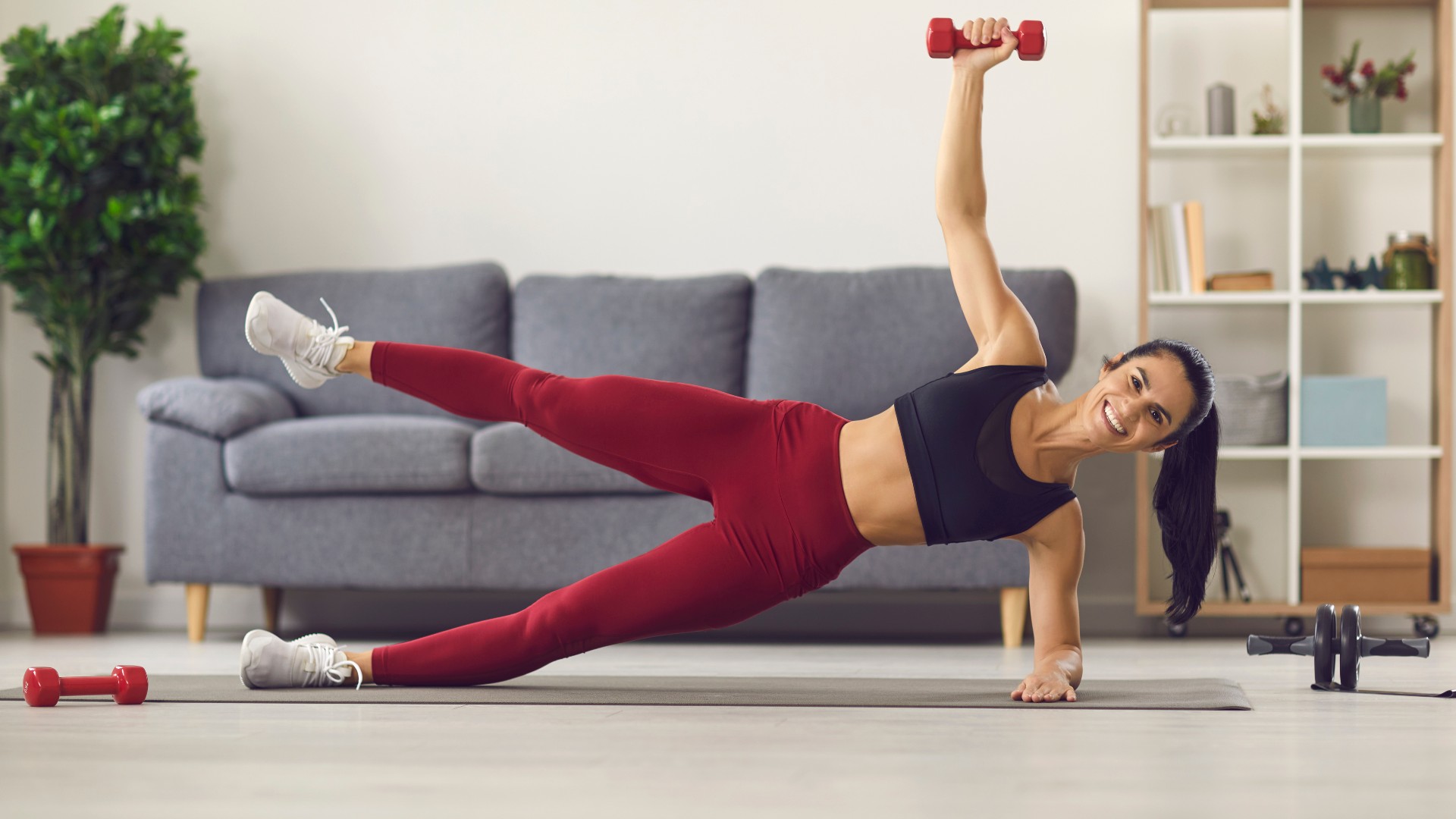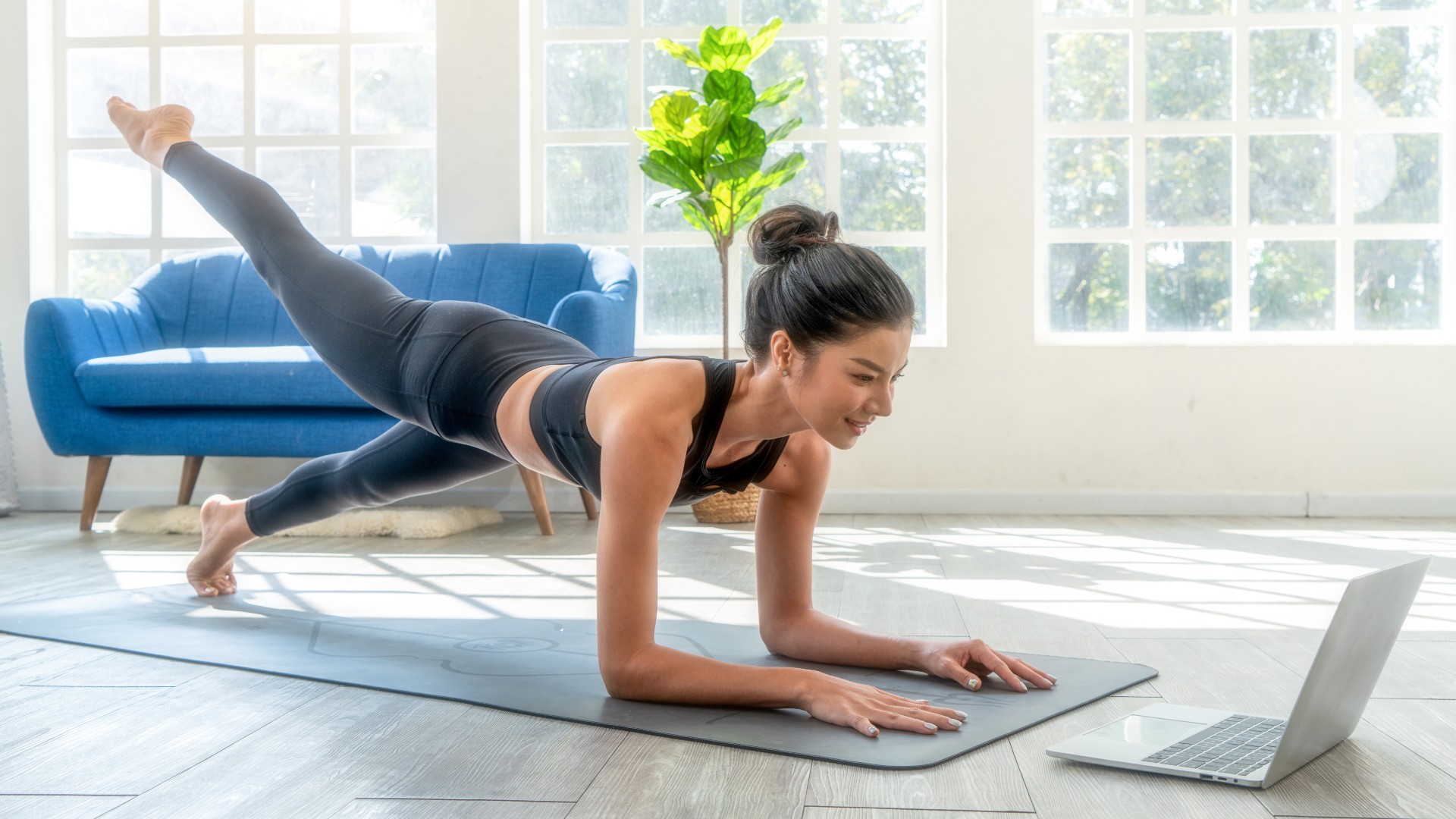
If you think you’ve done planks to death, this plank workout uses one dumbbell to ramp up the intensity for every major muscle group.
The 8-move workout by Peacock Pilates London combines planks with upper and lower body exercises like squats, rows and lateral raises. You’ll hit your core muscles hard and work your arms, shoulders, back, chest, glutes and legs.
If you currently suffer from shoulder injuries, planks and side planks might be off the table. Check with a qualified medical professional before beginning a new exercise regime, and stop at any time if you experience pain.

To do this plank workout, you’ll need one light dumbbell. You can check the video below for each exercise in more detail. Try to do each move 10-12 times on each side, and as advised by Peacock Pilates London, ‘focus on quality and not quantity.’
Keep your core engaged as you move and stack your shoulders over your wrists during each plank. The dumbbell used in this workout is 1.25kg, but scale this to suit your current fitness level and work through a full range of motion rather than lifting heavy. Here are some of the best ways to build muscle without lifting heavier weights if you need inspiration.
Watch the Peacock Pilates London dumbbell plank workout
If you’re unfamiliar with plank workouts, consider some of these plank variations first, and make sure you feel comfortable with the movement patterns before attempting an entire session using them.
Planks can be hard-going on the shoulders, especially stabilizer muscles like the rotator cuffs — a group of muscles surrounding the shoulder joint that help support shoulder movement.
One way to scale back is to lower your knees (or one knee during side planks) to the floor. You’ll also notice the instructor stepping her top foot in front of the bottom foot for extra support. These are great fixes, but if you still experience pain, move on to the next exercise. And if it’s still a no-go, try our round-up of the best ab workouts to strengthen your core muscles without exacerbating shoulder pain.
We love training with some of the best adjustable dumbbells during plank workouts, allowing you to mix up the weight ranges quickly rather than relying on multiple sets of free weights. You could also test your balance and stability using a kettlebell.
Breathe fluidly as you move, and avoid restrictive breathing into your chest. Diaphragmatic breathing encourages expansive breathing, which involves breathing towards your stomach instead.
What we love about this workout is that it takes slow and controlled movements from Pilates (renowned for working your core and smaller stabilizer muscles) and increases intensity using one free weight and single-sided exercises.
We know from research that unilateral exercises help strengthen underused muscles and improve cross-body balance and coordination. But combine that with the time under tension method — working muscles through a motion for longer — and you could also build strength and muscular endurance.
Rather than performing explosive movements, each phase of the exercise is purposeful and efficient, often combining upper and lower body movements. For example, one combo includes bear squats and X planks — we’ve experimented with both, and they're complete muscle-burners.
Bear squats are renowned for working the quads and core muscles, but you’ll also notice a deep stretch through your ankles, knees and hips. You’ll move from the squat to plank toe taps, sending your bum high and stretching out the shoulders and posterior chain, including your lower back, glutes, hamstrings and calves.
Trust us, drop the heavy weights for this workout and focus on your form.







